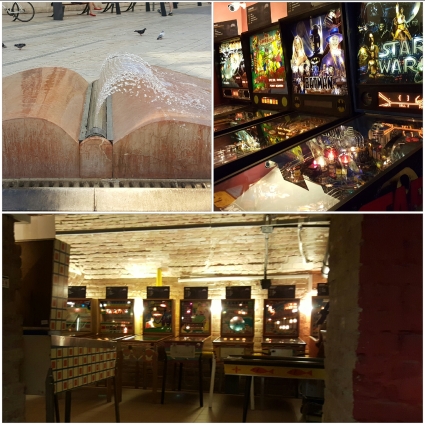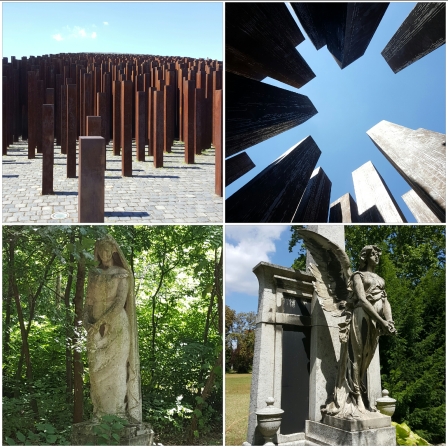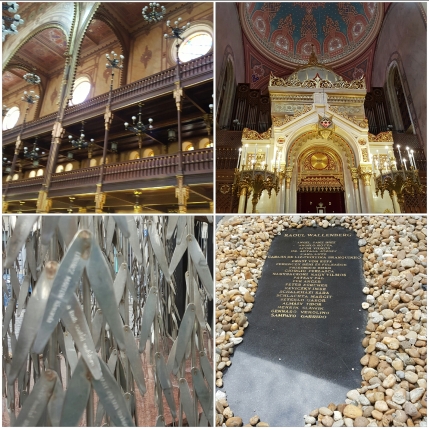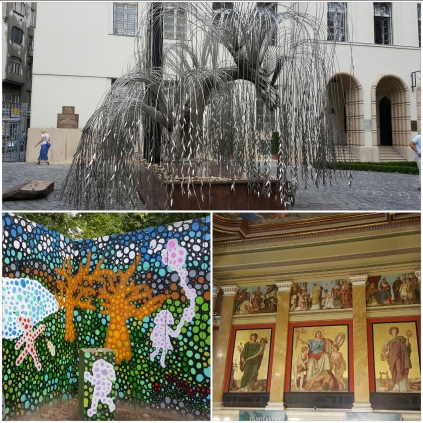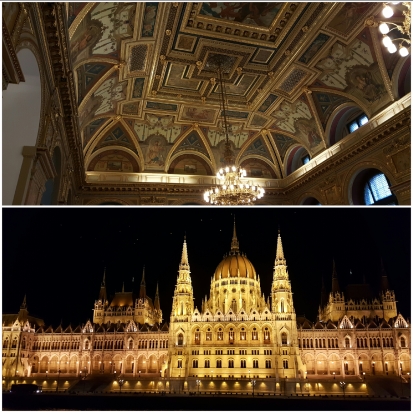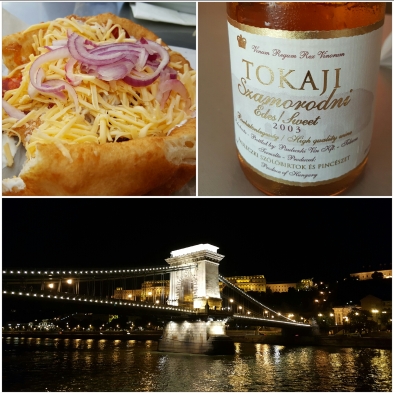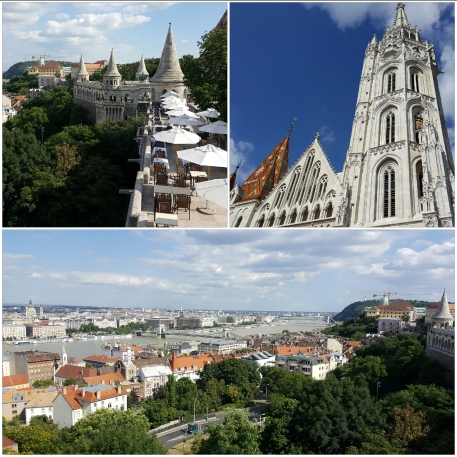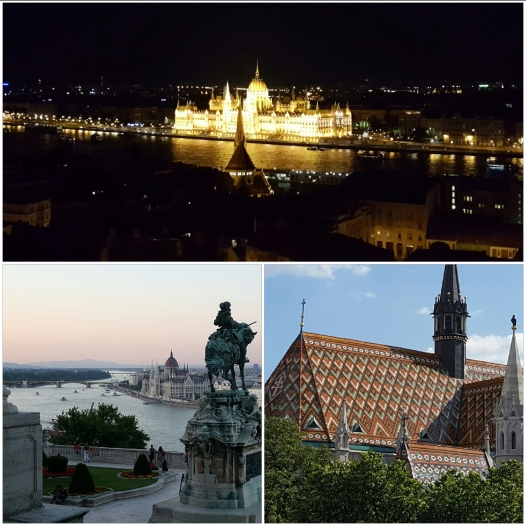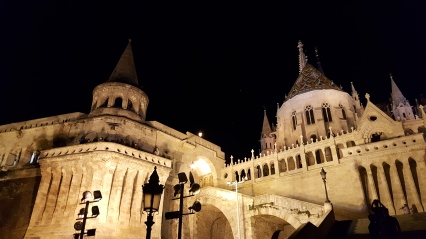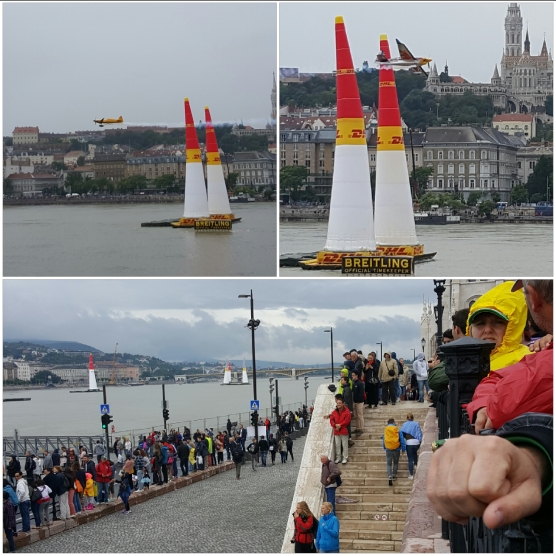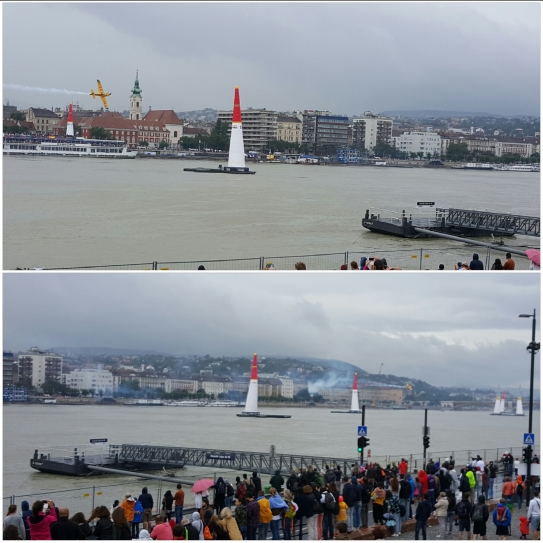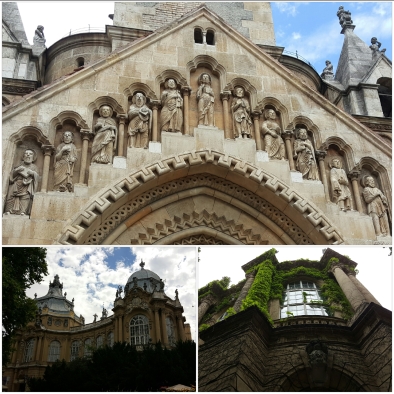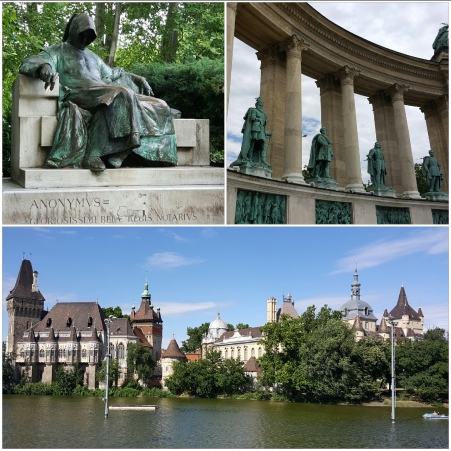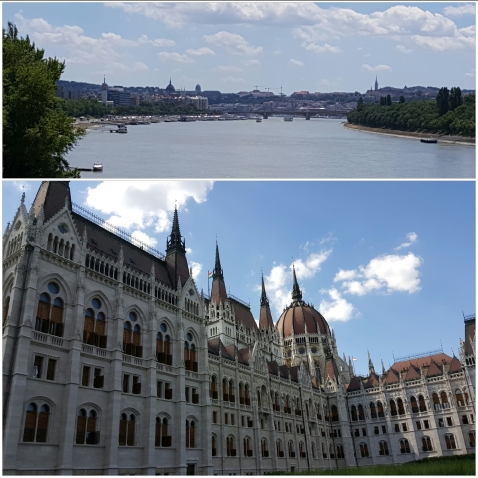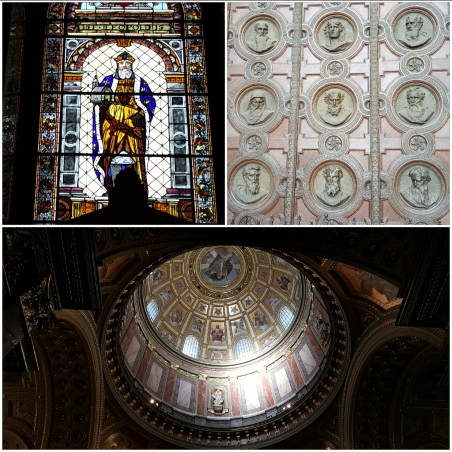This rambling features a bunch of ‘favorite’ European sights that is entirely based on today’s mood (and then basically pulling a name out of a hat if we couldn’t decide) and our current state of melting in ~85+ degree heat and 90% humidity. Anything that reminds us of a cold day probably got moved up subconsciously. And of course, our experiences were colored because some places were under renovation while others were too crowded to make our experience feel worth the admission cost.
Best Art Museum: National Art Museum of Catalunya (MNAC) in Barcelona. This was the only museum we visited multiple times because Saturday afternoons are free. 🙂 The palatial building has art-filled wings and frescoed domes. It dominates a hillside above Venetian-styled towers, waterfalls and fountains. MNAC’s collection is incredible – 13th century altarpieces (with mayhem-causing demons or saints boiling away in pots), Art Deco stained glass and advertising posters, sketches of the Spanish Civil War’s destruction, works by El Greco, Rubens, Goya…
Favorite Mode of Transit: Seaplane from Split to Dubrovnik. Head to Split’s picturesque harbor, sip on drinks waterside, board to find there are only 3 passengers, enjoy gorgeous mountain and island views all the way down the coast. A 45-minute jaunt and the chance the shoreline slip by is much preferable to a 4+ hour bus ride featuring two bonus border crossings.
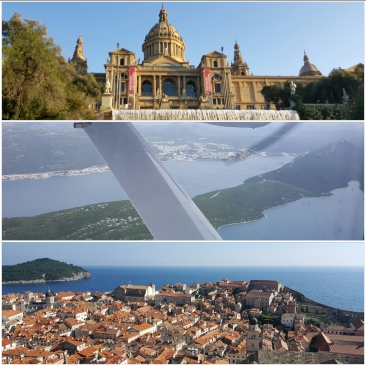
Best City for Drinking Outside: Budapest. This city takes summer drinking to a new level. Mix cheap beer, lots of public space, great transit and voila! Some parks have stands selling alcohol, but it is more common to bring your own. Time of day doesn’t particularly matter, though nights are better, especially if you come across live music or a soccer match screening. Fisherman’s Bastion and the pedestrian-only Liberty Bridge provide some great views and enough drinking space for everyone.
Most Impressive City Walls: Dubrovnik. Game of Thrones is filmed there for a reason. Several cities we visited had walls in the past, but Dubrovnik’s are complete and you can walk all the way around them, exploring towers and the intimidating Lovrijeniac Fortress across a small bay. The blue Adriatic and the tightly packed Old Town fill the views.
Happiest Palace: Pena Palace in Sintra, Portugal. Move over, Neuschwanstein. Not only is the Pena Palace more brightly colored, it was actually lived in. The interior is just as cheerful as the outside with fountains and tiles. The grounds are pretty as well, with rambling trails, live black swans, and carefully planned views.
Favorite Old Town: Tallinn. Small, surrounded by towers, full of church spires, pastel colored buildings, and a pretty hill to climb. Yes, restaurants and souvenir poods dominate. We ignored those and focused on the cuteness, small parks, and quieter streets. Note: we avoided the high season, weekends, and cruise tour groups.
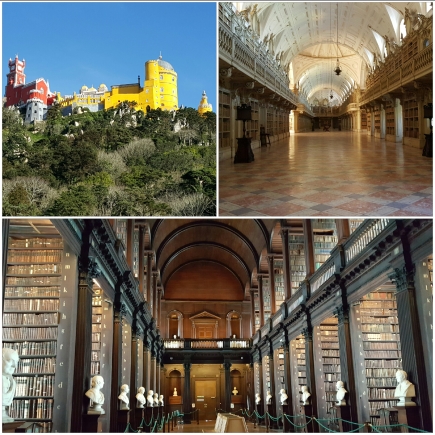
Library Nearest My Vision of Heaven: Trinity College Library, Dublin. One of about three places that looked like their Instagram images, no photoshopping required. Thousands of books, richly colored wood, gorgeous bindings. Large crowds detracted a bit. It isn’t a very wide room since the sides are cordoned off, but at least we could stay as long as we wanted to try to soak it in. The library at Portugal’s Palace of Mafra gets an honorable mention because it is equally beautiful, with far fewer visitors. The downside there is not being able to walk as far into it to get a sense of the scale. But the huge cross-shaped hall is gorgeous marblework worthy of a such an impressive royal residence.
Most Interesting Non-Art Museum: Village Museum, Bucharest. Outside in a city park, the Village Museum let us tour the Romanian countryside without leaving Bucharest. Dozens of old buildings – homes, churches, barns, windmills have been preserved, and turned into a living history museum. Lots of love has gone into furnishing the homes and keeping the carved gates and painted details. It was fun even in a storm (we sheltered in a wine press). The wide variety of structures showcased the different traditional styles from around Romania.
Sports Team with the Most Rabid Fans: Hadjuk Soccer Club from Split. Our hosts warned us that if we were ever harassed in a bar or on the street to just say “Volimo Hajduk” (“We love Hajduk!” – we never had to, everyone was really kind). Graffiti with the name Hajduk and their red-and-white checker colors was EVERYWHERE – sidewalks, buses, underpasses, huge murals on buildings. They have their own branded chocolate, liquor, snacks. Every kid must own at least one jersey. Even in Dubrovnik, Hajduk reigned.
Coincidental Event We Didn’t Plan to See But Enjoyed the Most: Red Bull Air Race, Budapest. Ok, so the weather was terrible, practices were cancelled, events cut short, and we didn’t get to see them fly under the bridge (a thing they convince the planes to do!). And it was still an incredible display of reflexes and flying planes stupidly close to water and between buildings in the center of a city with thousands of people cheering on either side of the river.
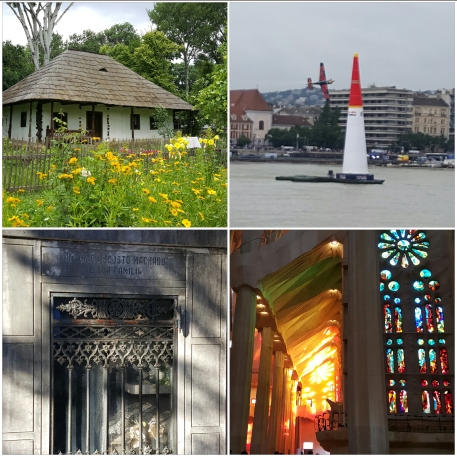
Creepiest Cemetery: Cemiterio dos Prazeres, Lisbon. Ghosts clearly come out at night. Above ground tomb, with doors of broken glass, let the lace curtains covering the coffins flutter in the wind. Few people, but cats in surprising places watching you.
Church Putting All Others to Shame: La Sagrada Familia, Barcelona. La Sagrada Familia is otherwordly. It stands alone, strikingly different from any other church we saw. Inside, the white stone canvas swirls with rainbows of colored light streaming through the stained glass. Statuary covers the exterior, the side portraying the Crucifixion is in violent relief, the opposite showing Creation is decadent with natural scenery. It is expensive, the priciest building we entered, but worth it – even with the thousand other people. While waiting to enter you can even watch the ongoing construction, and dream about what it will look like when finished.
Favorite Museum Artwork: Discovering the Body of King Louis II by Bertalan Szekely. It’s a weird choice, but in person it is impressive and some parts are so realistic that it took me a while to convince myself the canvas was flat.
Most Heartwrenching Memorial: Auschwitz I and Auschwitz-Birkenau in Poland. The preserved concentration, forced labor, and death camp complex is a sobering memorial to human suffering and powerful warning about the evils humans will commit. Crowds detract a bit initially, but it was easy to begin to ignore them and turn inward to try to understand the horrors that happened there. Auschwitz I was on a too-human scale, its brick buildings reminded me of college dorms. But of course, inside are the exhibits of human hair, items confiscated from the victims. It’s awful. My stomach churned for hours remembering that people tortured, murdered, starved so many. Auschwitz-Birkenau’s vastness magnifies the horrors of Auschwitz I. Everyone should visit to confront the world’s failure to stop the Holocaust and the ongoing need to keep it from recurring.
Historical Artifact We Should Have Learned about In School but Didn’t: Romania’s Steel Crown. King Carol I asked for a crown of steel made from cannons captured by soldiers fighting for Romania’s independence. He wanted to remember their sacrifice.
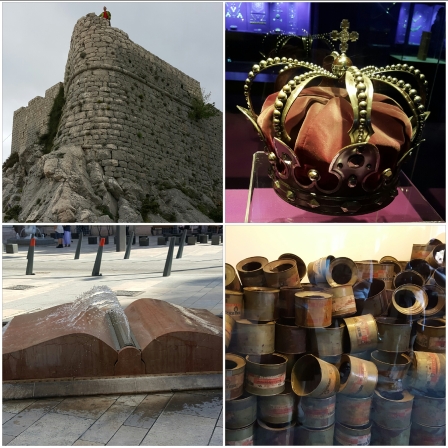
Cheapest Deal: Castles during Croatia’s off season. They often charge at least a small admission fee. But in April, some days no one will be at the ticket booth and the castles will still be open (can’t blame them for wanting to hike up if no tourists seem to be in town). 🙂 Happened at Omis and on Hvar.
Cutest Public Artwork: Book Fountain in Budapest. Water makes it look like the book’s pages are turning. It’s cute. The end.
Prettiest Hiking: Plitvice Lakes, Croatia. We visited during the off-season and avoided the worst crowds, and it was peaceful and pretty. Boardwalks weave around the waterfalls and under the trees; it’s a perfect way to spend at least an afternoon.
Where to See Books & Manuscripts Up Close: Chester Beatty Library, Dublin. The large libraries are beautiful in their own right, but only display a handful of books – they are all still on shelves. This museum focuses on individual books and has hundreds on display, all the way back to papyrus from ancient Egypt and fragments from the earliest copies of several books of the Bible.
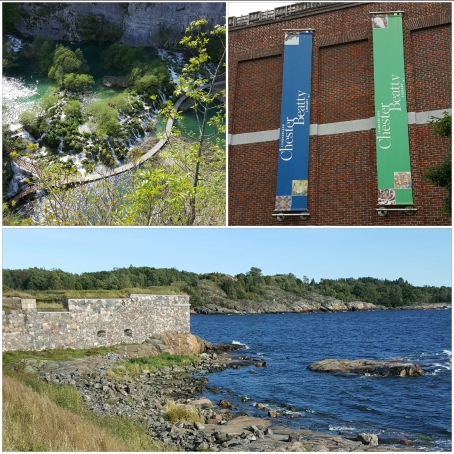
Favorite Fortress for Exploring: Suomenlinna, Helsinki. A small series of islands in the Gulf of Finland have the preserved remains of a massive fort that guarded Helsinki’s harbor. The tunnels running through many ramparts and rocky waterfronts are open for exploring.
Stress-inducing Thing that was Fun Afterward: Driving in Romania. Driving laws in Romania appear to be suggestions. Roads are shared with speeding semis, horse-drawn carts, bicycles, cars pulling over for no reason. Everyone honks for everything. But the countryside is pretty, especially in the Transylvanian mountains.
City Walking that Doesn’t Suck: Barcelona’s Wide Boulevards. Outside the Gothic Quarter’s tangled mess, sidewalks are huge, open, flat. The city is easy to navigate because just about every street is at a right angle.
Here are some other things grouped by city that I didn’t want to come up with individual paragraphs for:
Lisbon has a castle downtown! The ruined Carmo Monastery! The less ruined Jeronimos Monastery. Next door to the Pena Palace is the clamberable ruins of the Moorish Castle.
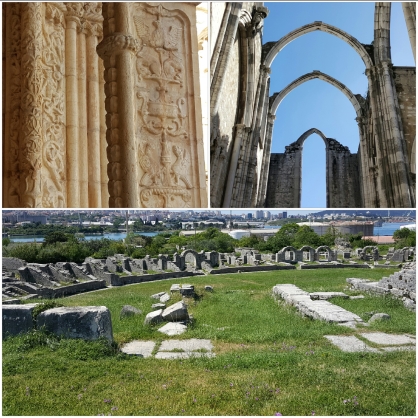
Barcelona’s Montjuic Castle has dark and checkered history, but beautiful views. Nearby, the Olympic Grounds are a great picnic/frisbee spot.
The damp of Diocletian’s palace basement in Split still shows how good Romans were at construction. Ruins at Solin add to that argument. Klis Fortress is also pretty but they clearly know people are coming due to GoT filming – the price keeps going up.
The shore path on the Babin Kuk side of Dubrovnik was more relaxing than ones nearer the Old Town. Ferrying out to Lokrum Island also avoided about 95% of the crowd and was a nice place to spend an afternoon being stalked by peacocks.
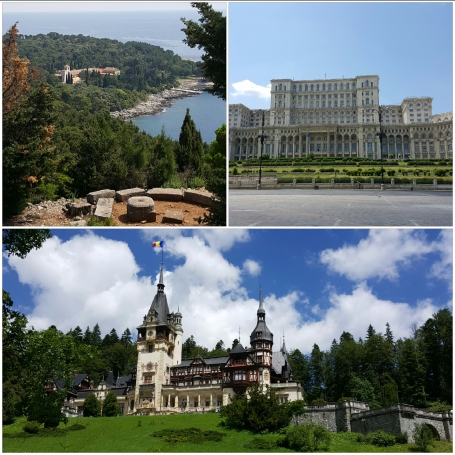
Bucharest has a beautiful Orthodox church every few blocks. Towering over everything, the Palace of the Parliament is a primer in government waste. Two hours away in the mountains, Peles Castle proves that a country doesn’t have to have a royal family for very long before all the trappings show up.
In Dublin, the National Archaeology Museum and St. Patrick’s Cathedral were my other favorites. And the whole city recalls lots of great literature 🙂 . Across the country, really just a few hours drive, are the Cliffs of Moher. Brave the wind and don’t get too close to the edge.
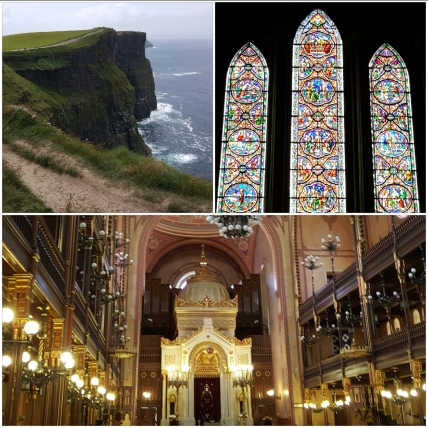
Budapest is impressive all around. The quirky Pinball Museum is great for 5 hours until your wrists give out but the massive Szechenyi Thermal Baths can relieve all those arm cramps. A more sombre visit, the Dohany Street Synagogue is a reminder of how the Holocaust changed Hungary.
In addition to the Uprising Museum, the entire city of Warsaw is a WWII memorial. Walking anywhere you come upon plaques and statues commemorating events or people, letting you map out the destruction in your own neighborhood. In the suburbs, the Wilanow Palace serves as a reminder of the pre-WWII era.
Krakow crams a lot into a small space, which explains why it’s packed with tourists. The Franciscan Basilica is incredible. The park encircling the Old Town, the riverfront walk, or Kazimierz (the traditionally Jewish area) gets away from some of the horde. Further out, the now-parklike Plaszow Concentration Camp is Auschwitz’s lesser-known cousin that makes a thoughtful accompaniment to Oskar Schindler’s Factory.
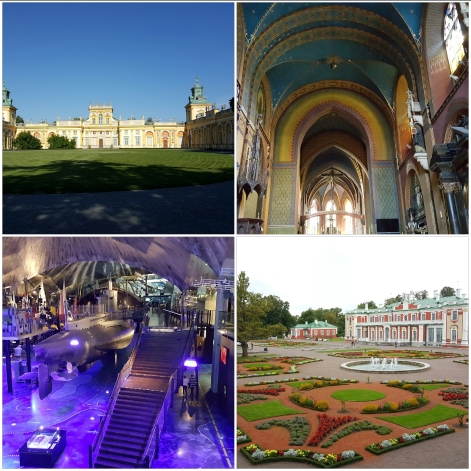
Tallinn’s St. Olaf church tower is a great way to view the Old Town and reveal a fear of heights. Tucked away in Kadriorg park is the impressive KUMU National Art Museum and the cute Kadriorg Palace (also housing art). The Lennusadam Seaplane Harbor has full sized boats and a submarine to explore
Again, these are the places that stuck out the most. Just about everything we saw was worth our time in some way or another. For every place we saw, there are more we heard about but didn’t get to. I suppose yet another reason to head back at some future point….
